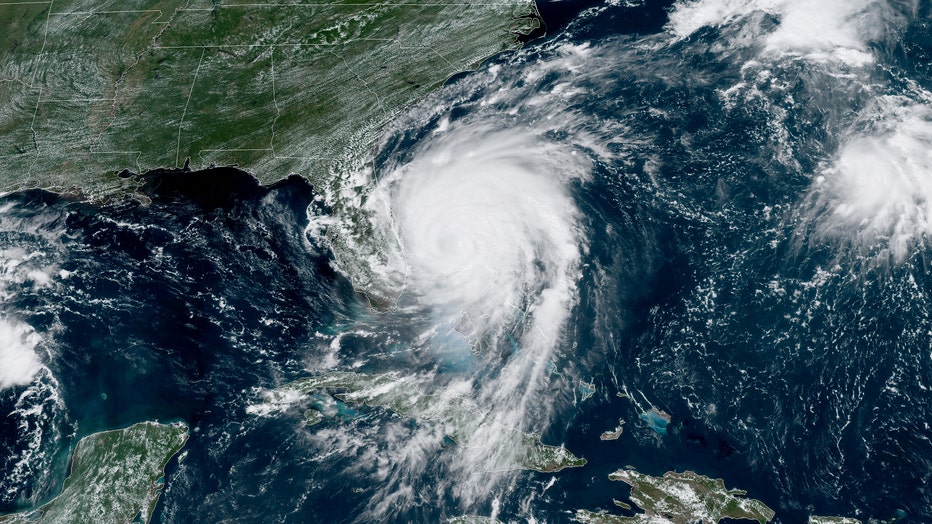Hurricane Dorian crawls along east coast of Florida as Category 2 storm
TAMPA, Fla. - After the most powerful storm to hit the Bahamas in recorded history parked over Abaco and Grand Bahama islands this week, pounding them with winds up to 185 mph and torrential rain, the storm finally began moving into open waters Tuesday on a course toward Florida.
As of Wednesday morning, Dorian remained a Category 2 hurricane with wind speeds of up to 105 mph and moving at 8 mph.
Dorian's hurricane-force winds remained offshore from the east coast of Florida and were projected to stay away from those Florida cities and towns bordering the Atlantic Ocean, said FOX 13's meteorologist Dave Osterberg.
While high winds are not the major concern, heavy rain and storm surge of up to five feet is, he added.

In this NOAA GOES-East satellite handout image, Hurricane Dorian, now a Cat. 2 storm, inches northwest away from the Bahamas on September 3, 2019 in the Atlantic Ocean. (Photo by NOAA via Getty Images)
"Yes, they will have those sustained tropical storm-force winds," Osterberg said. "I still think it's just that churning of the water, those high tide cycles, and just pushing all that water into the coast that will be the main problem with this system.“
The hurricane is expected to hold the Category 2 status as it takes its turn northeast between Wednesday and Thursday, coming dangerously close to the North Carolina coast line.
I still think even on a path like this, I don't think it's going to be the wind [that's the issue]. It's going to be the water that this whole storm system is bringing with it and pulling on shore," Osterberg explained. "Places like Charleston, South Carolina are very susceptible to flooding from hurricanes, and that is a huge concern to those folks up there.“
By Thursday, the Carolinas are projected to feel the effects of Dorian, but after the storm should head off and not bother anyone in the northeast U.S.
Once Dorian loosened its grip in the northwest Bahamas, local residents began swooping in, rescuing victims with jet skis and a bulldozer as the U.S. Coast Guard, Britain's Royal Navy and a handful of aid groups tried to get food and medicine to survivors and take the most desperate people to safety.
At least seven deaths were reported in the Bahamas, with the full scope of the disaster still unknown.
RELATED: ‘Total devastation': Hurricane Dorian slams parts of the Bahamas, leaves at least 7 dead
The storm's punishing winds and muddy brown floodwaters destroyed or severely damaged thousands of homes, crippled hospitals and trapped people in attics.
"It's total devastation. It's decimated. Apocalyptic," said Lia Head-Rigby, who helps run a local hurricane relief group and flew over the Bahamas' hard-hit Abaco Islands. "It's not rebuilding something that was there; we have to start again.“
RELATED: Video shows devastating winds thrashing Bahamas during Hurricane Dorian
She said her representative on Abaco told her there were "a lot more dead," though she had no numbers as bodies being gathered.
The Bahamas' prime minister also expected more deaths and predicted that rebuilding would require "a massive, coordinated effort."
"We are in the midst of one of the greatest national crises in our country's history," Prime Minister Hubert Minnis said at a news conference. "No effort or resources will be held back."
RELATED: Hurricane Dorian: Woman in Bahamas houses nearly 100 dogs to protect them from storm
The Associated Press contributed to this report.

